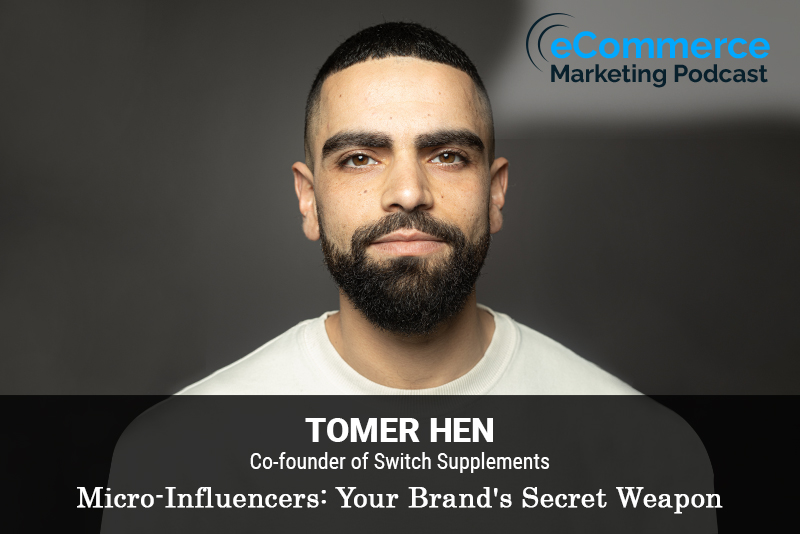
The eCommerce Marketing Podcast walks you through everything that goes into ecommerce marketing — from inbound marketing to paid advertising to conversions. Learn the strategies top marketing experts use to grow their businesses.
Tomer Hen is the co-founder of Switch Supplements, as well as two other influencer-led DTC brands. With his expertise in influencer marketing, Tomer has helped numerous brands establish and maintain authentic relationships with influencers, with his Influencer Relationship Profits OS. Tomer has been listed in the Forbes 30 Under 30 list, and he’s the father of Milo, a 3-year old Golden Doodle.
In this episode, you will learn
The concept of micro-influencers and why they are so important for eCommerce brands today
How do you identify the right micro-influencers for a specific brand or product and factors do you consider
Key advantages of working with micro-influencers as opposed to more prominent influencers in the digital space
How do you approach establishing authentic relationships between brands and micro-influencers to ensure long-term success
How do you measure the success and ROI of micro-influencer campaigns and What metrics are most useful for evaluating their performance
Examples of successful influencer-led DTC brands and how micro-influencers played a role in their growth
For show transcript and past guests, please visit https://www.ecommercemarketingpodcast.com
Or on YouTue at:
https://www.youtube.com/channel/UC3PgT0NOGzpdPGQtBK0XLIQ
Follow Arlen:
Twitter: https://twitter.com/askarlen
Facebook: https://www.facebook.com/arlen.robinson.7
Instagram: https://www.instagram.com/arlenyohance/
LinkedIn: https://www.linkedin.com/in/arlenrobinson/
Past guests on the ecommerce marketing podcast include Neil Patel, Nemo Chu, Luke Lintz, Luke Carthy, Amber Armstrong, Kris Ruby and many more.
Thanks for listening. Be sure to subscribe and leave a review.

Title: Harnessing the Power of Micro-Influencers with Tomer Hen
Guest: Tomer Hen, Co-founder of Switch Supplements
Host: Arlen Robinson
In this episode of the eCommerce Marketing Podcast, Arlen Robinson interviews Tomer Hen, the co-founder of Switch Supplements, about the power of micro-influencers and how e-commerce brands can leverage them for growth. Tomer shares his journey from digital marketing to co-founding multiple influencer-led DTC brands and offers valuable insights into building authentic relationships with influencers.
Key Takeaways:
- [2:00] Introduction to Tomer Hen:
- Background in digital marketing and founding Modco.
- Transition to e-commerce and co-founding Switch Supplements.
- [6:30] Importance of Influencer Relationships:
- Using influencer relationships to scale brands.
- The value of long-lasting relationships over one-time shoutouts.
- [10:00] Concept of Micro-Influencers:
- Definition and benefits of working with micro-influencers.
- Micro-influencers have a more engaged and targeted audience.
- [15:00] Leading with Value:
- Strategy of leading with value and building authentic relationships.
- Sending free products without expecting immediate returns.
- [20:00] Seeding Strategy:
- Importance of sending free products and not asking for immediate posts.
- Creating organic relationships that lead to genuine promotion.
- [25:00] Finding the Right Influencers:
- Manual research using social media platforms.
- Vetting influencers based on relevancy and engagement.
- [30:00] Measuring Success:
- Tracking content creation and organic reach.
- Calculating the media value of influencer-generated content.
- [35:00] The Compound Effect:
- Benefits of working with multiple micro-influencers.
- Creating a sustained and noticeable presence in a niche market.
Guest Info:
- Tomer Hen
- Co-founder of Switch Supplements
- Twitter: Tomer Hen
- LinkedIn: Tomer Hen
- Website: Influencers Checklist











